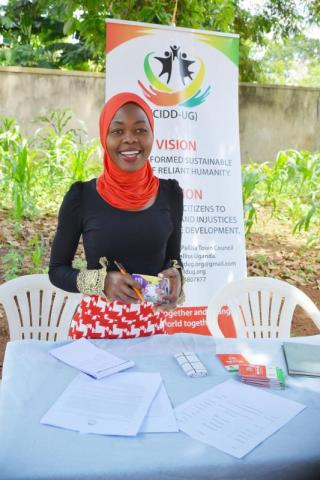
When the world hard the Breaking news about the presence of the deadly corona virus, the speed at which it harvested human lives from Wuhan province in China and its spread globally, this plunged the world into panic especially as it devastated the first world countries with strong economies, precision in research, ultra modern and vibrant health systems.
In response, the scientist swiftly started proposing strategies to combat the spread and probably eradicate it, while the world planers preoccupied themselves in forecasting the world after COVID-19, from the onset, it seemed like this was to end soon. However it is now clear that COVID-19 has come to stay. The bigger question around us should be, how are people and Governments on planet earth ready to adapt to the impacts of COVID-19 but most especially on the health of young people and women?
Despite the existence of National Youth Policy (1999), The National Health Policy 2000, Adolescent Health Policy guidelines and standards 2012, National Orphans and Other Vulnerable Children Policy 2004, The Uganda Gender Policy 2017, Gender in Education Policy 2010, National Parenting guidelines -2018, Adolescent health Policy guidelines and service standards -2011, National policy guidelines and service standards for SRHR- 2012.
Guidelines to implement the policy on prevention and response to sexual harassment - 2018 also supported by the second Uganda national development plan (NDP-11) 2015-2020, and other strategies that all commit the government to specifically address the Sexual and reproductive health needs of the youths, there still exists a gap in access to and utilization of ASRHS and gross Human Rights abuses at all levels.
At community level, adolescents are still grappling with unwanted pregnancies, sexually transmitted infections (STIs), defilement, and rape among others. The situation has also been exacerbated by the outbreak of covid-19 pandemic that caused acute ASRHs information shortage, leaving majority young people with low ability to make right decisions about their bodies. To remedy this now calls for robust and or multi-sectoral and well coordinated ASRH response to adolescents to not only enable them make informed decisions about their sexuality thereby reducing their susceptibleness to associated dangers but also create social safety net for young people. This is now a role for Government, CSOs private sector, media, Donors and other development partners to take on.
As a Youth Focal Person at CIDD-UG I appreciate the role of many institution but most especially Naguru Teenage for their endeavors in building the capacity of CSOs in ASRH service integration as CIDD-UG will continue making inroads to all stakeholders while encouraging them to do ASRH service integration as a powerful tool but also coordination as a strategy to amplify this urgent ASRH need within the COVID-19 Era. Let’s do these together to save more of our children and guarantee them a better future.
The writer of this article is
Namuddu Sumaya Kato,
CIDD-UG
Youth Focal Person.
